Comet 4c - Texture Baking
03/04/10 20:00
The news may have seemed quiet for a couple of months, but I’ve been working like mad on the Comet, and I’ve only just got to the point where I can show off the latest changes.
When I started the 3D cockpit, I decided to model the geometry in high detail and rely on X-Plane to give a sense light and shade. It meant I could paint components in plain colours, and devote the vast majority of the precious bitmap space to all the important gauges, signs and labels. It didn’t work as well as I’d expected: text and instrument clarity is good, but, although the cockpit looked fine in some situations, it could look flat and featureless in others. It was remarked on during prototype testing, and I realised something had to be done.
Anyone who has dabbled with 3D software knows that basic geometry can be coloured using an external 2D texture file, like a kind of digital trompe-l’œil. The textured geometry can then be placed in a lit scene, and the software can calculate how the light is reflected, bounced, bent and scattered, tracing the path of each ray to “render” a highly realistic image. As well as rendering a finished picture, software can apply the calculated light and shade in reverse, applying it to the texture file. Originally, it was a time-saving trick for animation: a way of storing the basic shadows so they could be repeated without re-rendering the entire scene for each frame. With X-Plane, it can be used to imprint realistic highlights and shadows on an object file. The technique is known as “rendering to texture”, or “texture baking”. I had never tried it; I had to research it, learn it and test it, which took time.
Here are examples before and after:
Version 0.87 - Plain Colours (as it used to be)
The result is very clean, very bright, but not realistic. It can look flat and featureless when the light is in certain directions.
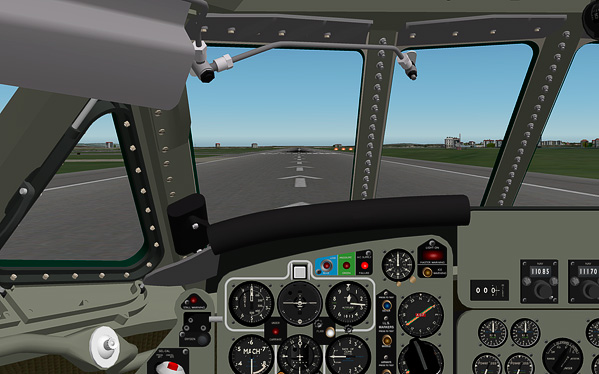

Version 0.90 - Baked Shadows
To prepare for texture baking, every single component had to be re-mapped. I lit the scene as if on a bright overcast day, with plenty of light, but diffuse, so you can’t really tell where it’s coming from. That means the shadows won’t jar too badly with the lighting in X-Plane. The disadvantage with using any kind of shading is that X-Plane’s compression is prone to colour banding and artifacts. Even so, the result is far more convincing. I’ve only done the pilots’ panels and windscreen frame, so there’s a lot more work to come ...
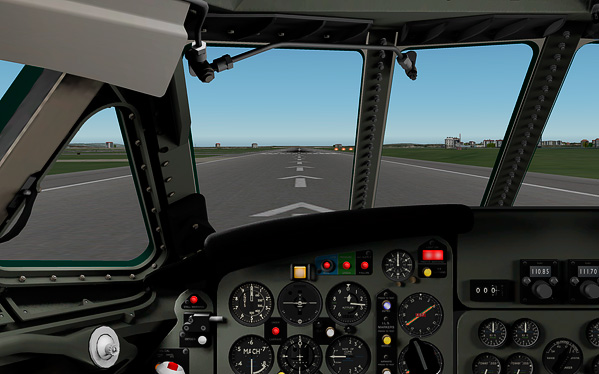
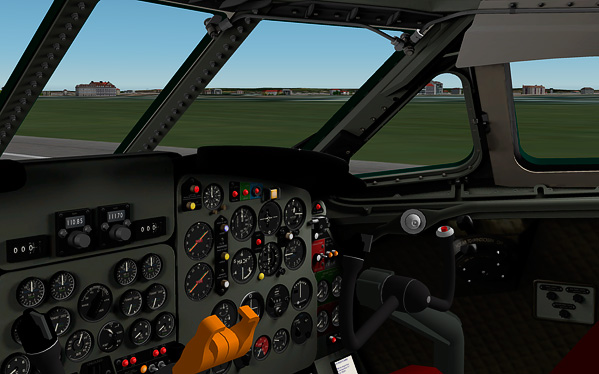
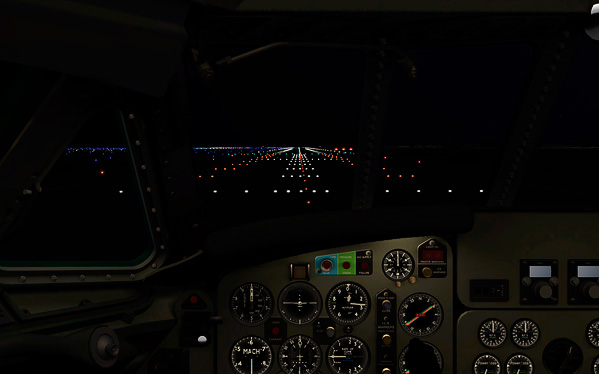
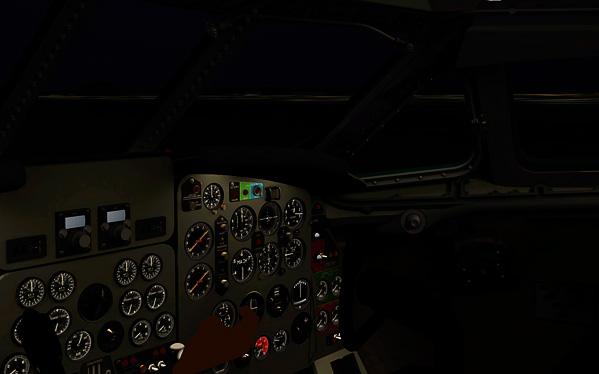
--
GMM-P (03/04/2010)
When I started the 3D cockpit, I decided to model the geometry in high detail and rely on X-Plane to give a sense light and shade. It meant I could paint components in plain colours, and devote the vast majority of the precious bitmap space to all the important gauges, signs and labels. It didn’t work as well as I’d expected: text and instrument clarity is good, but, although the cockpit looked fine in some situations, it could look flat and featureless in others. It was remarked on during prototype testing, and I realised something had to be done.
Anyone who has dabbled with 3D software knows that basic geometry can be coloured using an external 2D texture file, like a kind of digital trompe-l’œil. The textured geometry can then be placed in a lit scene, and the software can calculate how the light is reflected, bounced, bent and scattered, tracing the path of each ray to “render” a highly realistic image. As well as rendering a finished picture, software can apply the calculated light and shade in reverse, applying it to the texture file. Originally, it was a time-saving trick for animation: a way of storing the basic shadows so they could be repeated without re-rendering the entire scene for each frame. With X-Plane, it can be used to imprint realistic highlights and shadows on an object file. The technique is known as “rendering to texture”, or “texture baking”. I had never tried it; I had to research it, learn it and test it, which took time.
Here are examples before and after:
Version 0.87 - Plain Colours (as it used to be)
The result is very clean, very bright, but not realistic. It can look flat and featureless when the light is in certain directions.


Version 0.90 - Baked Shadows
To prepare for texture baking, every single component had to be re-mapped. I lit the scene as if on a bright overcast day, with plenty of light, but diffuse, so you can’t really tell where it’s coming from. That means the shadows won’t jar too badly with the lighting in X-Plane. The disadvantage with using any kind of shading is that X-Plane’s compression is prone to colour banding and artifacts. Even so, the result is far more convincing. I’ve only done the pilots’ panels and windscreen frame, so there’s a lot more work to come ...




--
GMM-P (03/04/2010)
blog comments powered by Disqus
